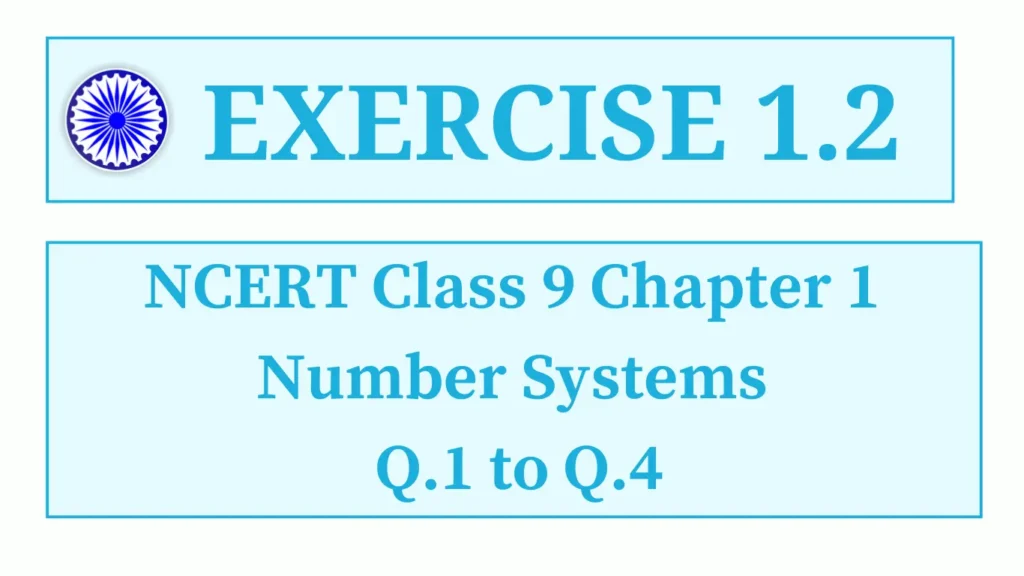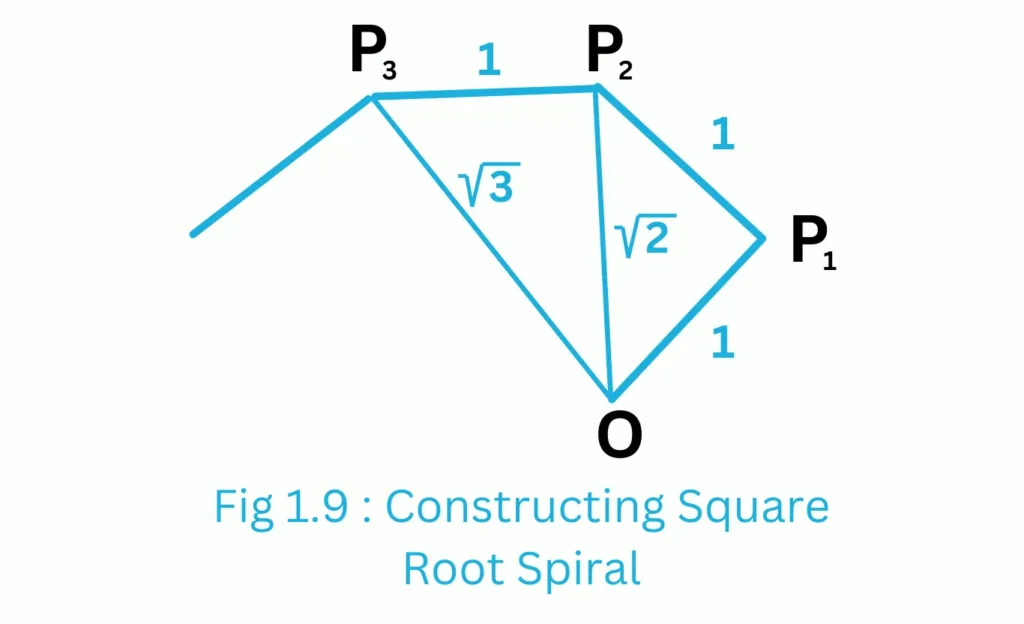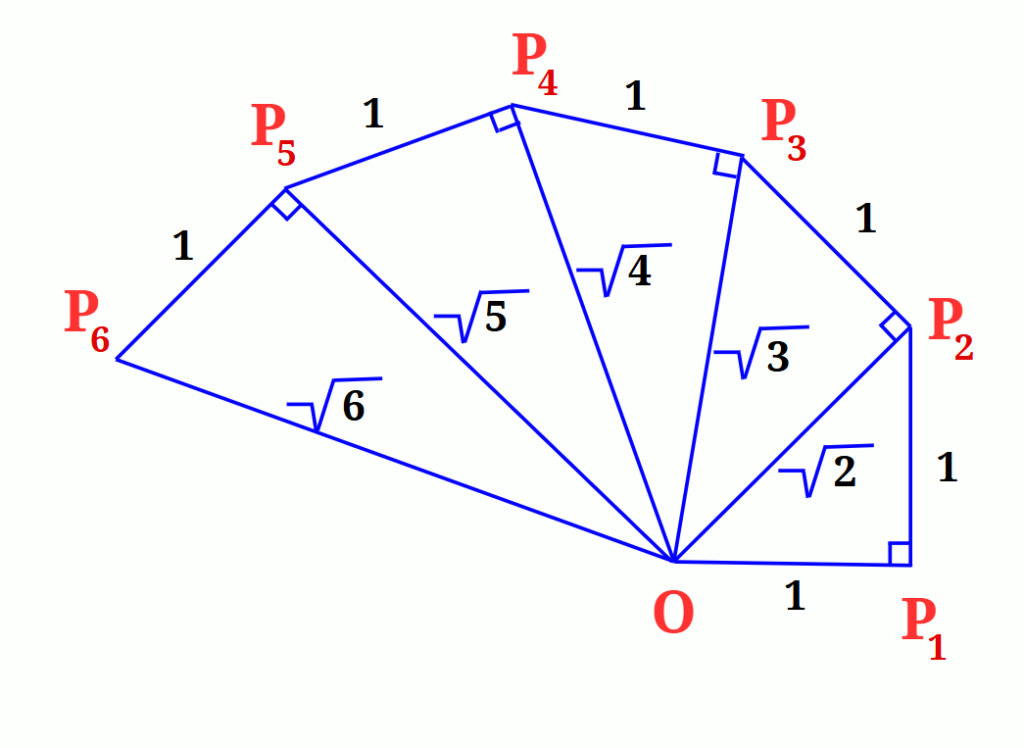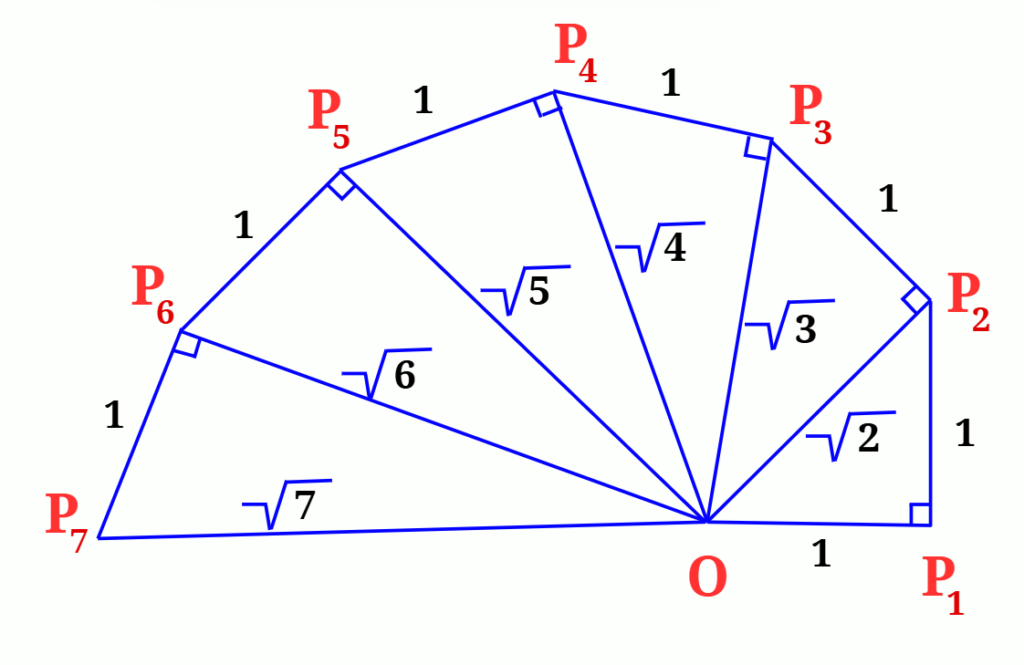
Exercise 1.2 NCERT Class 9 Mathematics Solutions
Exercise 1.2 NCERT Class 9 from the chapter Number Systems contains 4 questions.
In this exercise, the questions are based on the topic irrational numbers.
The first question of Exercise 1.2 NCERT Class 9 is a true/false question on rational and irrational numbers.
1. State whether the following statements are true or false. Justify your answers.
(i) Every irrational number is a real number.
Answer
True, as real numbers contain rational and irrational numbers both. Real Numbers are actually all the numbers that can be represented on the number line practically and irrational numbers are some real numbers that lie on the number line. So, all irrational numbers are real numbers.
(ii) Every point on the number line is of the form , where m is a natural number.
Answer
False, as there are many numbers of the form such as , , , etc. that lie on the number line but we can write them as follows:
= ±2,
= ±3,
= ±4.
So, every point on the number line is not of the form
(iii) Every real number is an irrational number.
Answer
False, as all rational numbers such as etc. are real numbers but not irrational numbers.
The second question of Exercise 1.2 NCERT Class 9 is about square root of integers.
2. Are the square roots of all positive integers irrational? If not, give an example of the square root of a number that is a rational number.
Answer
No, the square roots of all positive integers are not irrational. For example, 4 is a positive integer and the value of is ±2 which is a rational number.
The third question of Exercise 1.2 NCERT Class 9 is about representation of irrational numbers on the number line.
3. Show that can be represented on the number line.
Answer
Using Pythagoras theorem, we can show that is the hypotenuse AC of a right angled ABC having base AB of length 2 units and height BC of length 1 units as shown in the figure below.
We can easily represent on the number line using the following steps.
Steps to represent on the number line.
Step 1: We first draw the number line.
We draw the number line by taking 1unit of gap between the numbers. Unit may be centimeter or inch but should be same.

The fourth question of Exercise 1.1 NCERT Class 9 is true/false question on the number system.
4. Classroom activity (Constructing the 'square root spiral'):
Take a large sheet of paper and construct the 'square root spiral' in the following fashion. Start with a point O and draw a line segment OP1 of unit length. Draw a line segment P1P2 perpendicular to OP1 of unit length (see Fig. 1.9). Now draw a line segment P2P3 perpendicular to OP2. Then draw a line segment P3P4 perpendicular to OP3. Continuing in this manner, you can get the line segment Pn−1Pn by drawing a line segment of unit length perpendicular to OPn−1. In this manner, you will have created the points P2, P3, ..., Pn, ..., and joined them to create a beautiful spiral depicting .

Answer
Construction of Square Root Spiral
Step 1: We draw a line segment OP1.
The length of the line segment should be 1 unit. You can draw 1 cm or 1mm or 1inch according to your convenience.

Step 2: From the point P1, we draw a perpendicular line segment P1P2 of length 1 unit.
We draw P1P2 = OP1.

Step 3: We Join OP2.
The length of OP2 =

Step 4: We draw a line segment P2P3 perpendicular to OP2
The length of P2P3 = 1 unit.

Step 5: We join OP3
The length of OP3 = .

Step 6: Similarly as above, we draw the following square root spiral.












